After the epics rains stopped in Turtuk, I began to visit many people in their homes and that is when i also figured a way to watch night news in someone’s house where people used to gather for the same. Kashmir floods have been quite devastating… People in Turtuk are constantly trying to get in touch with their relatives and friends and giving me news besides television news. Every day everyone prays for the well- being of Srinagar and every day we hear of discrepancy in media and the real stories. I hope things in Srinagar get better soon and every one feels at home again.
I also started my weaving lessons with Apo ali and Ashe and the journey was priceless. There are only 2 male weavers left in Turtuk who are already in their 80’s and are the only ones engaged in the warping process. Apo Ali always says warping is the job of a person who is calm, doesn’t lose temper and can meticulously handle the precision required for it. These days no one has the patience to learn or do this. He talks of what will happen if no one learns this skill and wants me to document his knowledge well. I have made a promise. He says keep the promise before i die. In the same breath he says, We in Turtuk live many years, i won’t die so soon. And laughs.
I will tell you the stories of Turtuk and its many wonders interspersed with lessons of weaving from Apo Ali because that’s how it really happened, my learning amidst the stories of the past. I call the two series “kisse Roosi Mohammed ke- the tales of roosi Mohammed” and “taana- baana (warp-weft)”!
Let’s begin…
Kisse Roosi Mohammed ke ( the tales of Roosi Mohammed)
When Turtuk was still with Pakistan and the Baltis of Turtuk went far and wide to get wheat grains and other trade items back from Skardu (still in Pakistan, 182 kms from Turtuk) on their backs over 7-8 days, there lived a man called Roosi Mohammed. Roosi mohammed was a man who brought dreams to Turtuk and changed the way Baltis of Turtuk aspired and dreamed. He worked in Lahore and Karachi and later ran a very successful hotel in Skardu. He was known to be one of the best halwais of the time but typically was a city man with roots in Turtuk. Whenever he came home, he brought with him, the city. Anything of the city was so strange, that it could bring only wonder to Turtuk! And much to everyone’s amazement, POWER! People either loved him for all his newness and his wonders or looked at him with gross suspicion. Whatever may be the case, he was never ignored, was always consistently entertaining and is definitely a major influence on modern day Turtuk.
- The wooden box through which a woman talks to you:
When Apo ali (who is now 82) was about 14-15 years old, the story reached everyone that Roosi mohammed has a wooden box through which a woman talks to you in Urdu. You also hear news of the world and someone sits and sings songs in it. No one believed it at first and then few people charged themselves to Roosi Mohammed’s house to unravel this mystery.
The news was confirmed… “yes yes there is indeed a box that talks”!
Roosi mohammed and his brother Ghulam Hassan brought the first Radio from Skardu to Turtuk and what followed was a story from a film.
Everyone was suddenly talking of the box that talks… they had never seen anything like that before, so they would do anything to make sure they have more of that box that is called RADIO!
So, it was set. Radio will be played but Roosi Mohammed must be pleased first. Groups of about 10 people were made who carried 1 large stock of cattle fodder each. Once 10 stocks were collected, the radio was played for turtuk audience of 10 for the first time. Obviously, when its Roosi Mohammed, it had to be more entertainment than just the radio. He created enough drama to get everyone’s heart racing. The showman, Roosi Mohammed, and what a grand show. The radio knob was turned and wallaaaaah, (as they say as an exclamation for most things and events)there was a voice from the other end. Some people got up to see if there was anyone behind. They checked and verified and looked for all suspicious traces! Nothing! It was the radio talking!
This is it. A dream was planted. The world was opened out. The imaginations became more tangible. And Roosi Mohammed’s cattle had enough good feed for the whole winter season.
In those days, its said during certain hours of the day, all the village lanes were quite silent, except one, the lane where Roosi Mohammed played radio!
It is also said that a queue of men always stood with their ears closely tucked to Roosi Mohammed’s walls for just one sound of the woman who talks through the box.
Taana- Baana- Lesson 1: Terms and Warping
Apo Ali says i must learn the terminology they work with first. I say “jo hokum apo ali- as you say apo ali”.
The textile terminology in Balti:
Spindle: phang
Yarn- hand spun: kutpa
Yarn- mill spun from leh:nanma
Sheep wool- luak- e- baal
Sheep wool yarn- hand spun: baali kutpa
Weaving: thabanma
Warping: thutpa
Weaver: thak ban khan or thak ban ustad
Artisan:lakshis ustaad
Loom: thaksha
Wool: baal
Shawl: kar/ also pronounced kaa sometimes i heard.
wool shawl- baal-e-kar
After collecting the sheep wool, it is carefully hand spun (i couldn’t see the hand spinning because Apo Ali had already finished spinning his stock of sheep wool. The technique is the same as eri hand spinning or any fibre) through a small spindle and made into balls for warping. The rest is wrapped around small sticks to get attached to the yarn case on the loom.
Today we start with the warping process.
Apo Ali has deviced a fantastic technique to help him in his job as well as train the young kids. He employs two kids for the job at Rs 25 each to run between the two points of the warping length. Their job is to run with the yarn back and forth and help Apo Ali make the warping loops. Kids love this game and take turns to feel important doing it.Taking the older weave as reference, he carefully breaks each line of thread and joins with the new one to achieve about 19 inch width and 6 metres length.
Apo ali takes the weave he finished to the field to start the warping process for a new one.
Sumeera Bano is picking this job pretty soon and quite efficiently. Apo Ali is happy with this support today.
The precision and concentration he follows at this stage makes me feel how important a skill it is for it to be passed on.
Kids sometimes get a little rowdy to take turns so we engage ourselves in playing the game of 5 stones that i played in Nagaland with my kiddie friends there. Sumeera and nooreen are as good at it as Borlumla in Nagaland. It’s fascinating. Apo Ali keeps stealing glances at us while warping the sheep wool yarn and smiles throughout that 1 hour 20 minutes warping time.
He makes a meticulous marking with a marker to suggest the beginning and end of 2.25 metres of fabric. This was earlier done with charcoal.
After adding the warping sticks, Apo ali takes Ashe’s help to carefully roll the whole warp and take it to the loom. He follows no particular count for it and do it as per his experience so far.
once the warping is over, Apo Ali takes this for weaving to the loom.
- Roosi Mohammed: Cheeni ch’aa thungera?
Sugar was an unknown thing to Baltis of 1950s- 1960s. Jaggery was known to be there but in such little quantities and with only those few people who travelled to areas with such resources and had the money to afford it. Till now Baltis made syaha ch’aa (red tea) by boiling the flesh of rose plant stem in water till it became a beautiful red. The joy of this ch’aa was only in the colour and Baltis also referred to it as “majboori ch’aa”- a chai had in the absence of all other better ch’aa. Then there was also pau ch’aa, (butter tea with salt, called gud gud in Ladakh), an influence from neighbouring Ladakhi Buddhists. But never Cheeni Ch’aa or sugar tea.
The only source of sweetness in Balti lives was their Zabaan or mother tongue called Balti, where each word comes out like poetry or the various fruits like apricots (khurmaani), walnuts, mulberries, grapes and many more that are abundant on this fertile land, that is neither too high, nor too low, neither too cold for the land to freeze into aridness nor too hot for the pests and flies to appear in the fields.
Life in Turtuk went on with little hope of seeing and tasting something called Cheeni Ch’aa.
Then came Roosi Mohammed and with him, an extra dose of sweetness in Turtuk!
One special day, he called his special friends and made one special ch’aa for them. Everyone like everytime was curious what the city man, Roosi got this time! They all sat in anticipation and cups of tea were brought out… wallaaaaaaah… what is this? It is not pink like pau ch’aa nor red like syaha ch’aa. It is a strange colour and it looks milky.
One sip… wallaaaaah… CHEENI CH’AA! Sugar-sweet, delightfully delicious Cheeni Ch’aa!
Roosi served this special tea only to his special friends and since each one wished a little more of it, everyone hoped to be that special friend to hear from his mouth the sweet words, “cheeni ch’aa thungera?” (will you have sugar sweet tea?).
Taana- Baana- Lesson 2- Weaving:
The warped structure is then taken to the main loom frame structured by him. Apo Ali carefully joins the pedals of the loom to the bobbins- 4 pedals- 4 bobbins
Right 1 pedal- out 1 bobbin
Right 2 pedal- out 2 bobbin
Left 1 pedal- In 1 bobbin
Left 2 pedal- In 2 bobbin.
For a new weave, he leaves about 5 inch tassle space and pulls the loom and bobbins gently through the warp knots. This process to get the new yarn in place for the weaving to begin has to be done extremely precisely lest you break the yarn or get them entangled. Again after leaving 5 inch space for tassles, the Weaving begins following the paddle pattern 1,3, 2, 3, 2, 4, 1,4… Repeat…
What this essentially does is create gaps for the yarn (fitted in the wooden case) being shifted from one end to another to lock the warp at right angles to each other with the weft.
In this play of warp and weft, Balti Ball-e-kaar gets woven. Apo Ali happily explains to me every level and finally when the shawl is ready, he proudly shows it to me.
To make his living, (Apo Ali refuses to be dependent on his family even at this age), he warps and sometimes weaves shawls for his neighbours and friends as well.
- Roosi Mohammed: Pressure-
It was probably just another day but Roosi being himself, always liked to entertain. So the following event too got etched into people’s memories forever.
A meeting was called to share another new thing of wonder from the cities. This time there was a talk in the village that Roosi has brought the strangest of things so far.
Once everyone gathered together, the precious grain, rice was brought in and put in a strange vessel. A lid was put on it and nonchalantly Roosi gets up and engages everyone in an absolutely random conversation much to their surprise. He spoke, while people heard. Few minutes passed and still there was no sign of what Roosi was to share with them. What about the rice, does he not need to check. They grew more silent in anticipation. There was a hissing sound from the background but it was a strange sound and it came from that strange vessel. Everyone drew themselves closer, more closer, even more closer… looked intently… even more intently and just when everyone was tuned in, with a little tap on the lid from Roosi, a series of men got whistled at by the vessel!
Rice cooked in pressure was special! And that makes Roosi Mohammed extra special.
Roosi Mohammed brought the first pressure cooker to Turtuk.
Everyone lovingly calls the pressure cooker, just PRESSURE in Turtuk. This is now an absolute must in Turtuk kitchen and proudly so… it is believed that the baltis in POK (gilgit/ baltistan) still don’t have pressure cooker so when relatives and friends, take their visas and go visit them in Pakistan, one of the prized tohfa or gift to take to Pakistan is PRESSURE!!
Taana- Baana-Lesson 4- Tassel- making and stitching
After Apo Ali finishes the weaving, the job is handed over to Ashe(elder sister is called ashe in Balti, by now kids have started called me ritika Machong, which means mother’s younger sister)) to give it life. And she adds to it not only life but so much love at every level that the effect is almost magical. She carefully makes tassels joining 4 strands of yarn together to lock the weave and then three parts of about 18 inch width are joined/ stitched together to make a complete Balti Shawl.
During this job, family steps in to help and usually women sit together and chat during this time while their hands move continuously towards the job.
Shazia gives you the whole villages gossip and is always full of new stories.
I sat with Ashe and learnt many things about life in general and weaves and tradition in particular.
- Of Indian Army and Rice:
1950’s was the time when people of Turtuk dreamt of eating rice someday. Apo Ali told me that rice was so rare and so precious in those days that everyone wanted it. So, when Roosi got rice to Turtuk, he again did it his style. Some people had raw rice and said this is strange and no good and our wheat, gyas and barley is much better than this city grain of plains. Roosi got the steaming hot rice out and gave a little for everyone to taste. Cooked rice was delicious! And then, a dream was set in everyone’s head that someday we too will eat rice.
Life in Turtuk was hard and very few hoped for a better life. Each one had their fields, family, cows, sheep, donkeys and few chickens and each one toiled to make available the things that they can produce themselves and sustain themselves with. And like every heart that lives, they aspired for the little candies of life like rice, sugar, kerosene and other basics that will make their life easier.
Then came the March of 1971, first the talks of Pakistan- Hindustan war reached Turtuk and with that, came the war and the air bombs. Few of them but those few were enough to set fear in the always protected Turtuk hearts! They couldn’t fathom in all this confusion what will happen of them and what was actually going on.
In 1971, Turtuk became part of India. the news finally reached the people of Turtuk and they were told that they all might get killed now that they have been taken over by Hindustan, the land of Hindus. To them that meant death, Hindus will not let the Islamic people live.
Hindustanis (Indians) will soon be here. It is said that the people of Turtuk ran to the mountains and hid themselves. A village guard stayed back to keep Turtuk secure.
Indian army came in huge numbers wearing long overcoats. “they were not like us… so different”, they said. Their fear was seeming like true. The army asked the village guard to gather all the people at the Polo ground at 10 am, the next day. Next morning, people of Turtuk came huddled together, all fearful of the impending future. As they all lined up, the Indian army communicated through a translator, “ we are here to help you and give you what you deserve and you will have a better life, now you are in india.”
That was the day, helicopters came loaded with dreams- rice, sugar, kerosene, butter, canned food, and everything Turtuk dreamt of… the army came with bags of dreams and people of Turtuk rushed to open them…
THERE WAS RICE… rice from Punjab! And since then rice became a part of Turtuk staple diet. Now every Balti in Turtuk will live as Roosi Mohammed. Now every house will have all of what dreams are made up of!
Kerosene that was earlier rationed so carefully was now in abundance.
What got added as happiness and hospitality for all was also sugar sweet tea, the cheeni ch’aa. Now if you ask for chai, they insist on making it extra sweet.
As the people of Turtuk say, it was the beginning of good times! And as Apo Ali says, “Pakistan was a small hakoomat (ruler/ country). India came with dreams and a better life as it suited to a big hakoomat.”
That was the day and till today, Baltis of Turtuk and Indian army live in complete harmony supporting each other in many ways.
The porters and the loaded donkeys often make their way to the border posts, way high up there with necessary supplies for the stationed army. These areas, restricted to the Indian as well as foreign tourists, are full of stories of adventure and beauty. The borders will open when they will open!
Taana- baana- Lesson-4-the final touch:
Baltis don’t process and clean the yarn before weaving. Once the shawls are completely woven, they are soaked in soap water (earlier they used Pul, the natural soda from hot water springs. Only water is also enough for this process) and you gently rub them with your feet for about an hour till all the dirt, twigs and harshness of the wool comes out.
I help Ashe while she finishes cooking for the family but soon takes over and does it with much more ease and grace!
Once out of water, the shawl is gently rolled to squeeze out water and then sun dried.
This image is priceless for me for the sheer fact that Ashe who is generally very shy smiled herself when i told her i am going to take her picture.
 The shawl, before and after the washing process.
The shawl, before and after the washing process.
Once sun dried, the shawl is ready to be worn. If you are cold and you put it around your neck, you can’t take it off, guaranteed. The warmth cannot be explained. This is what happened to my two friends and they were more than happy to not let this go and took home with them memories of Apo Ali.
I am also bringing a bit of him with me and i am so happy to share all this with you.
Apo Ali handed over the shawls to me and said tell everyone about these shawls… and tell them i will continue making them till my last breath. I asked him how many has he made so far, he said, bahut, many, many many!
These stories will continue endlessly (i want them to) but it was time to go now, with the promise to come back! Phone lines were all shut and I had been here more than 2 weeks. I saw few new tourists and figured roads have opened. So, I decided to leave the next day. Farewell wasn’t easy and all of us had welled up eyes, even Apo Ali.
A new friend came in just when it was time for me to go back, Sumeera. She is studying in 8th standard and wishes to be an IAS officer. Her questions and curiosity about the world and various people drew an instant connection. She told me many stories of her land and i told her stories of where i travel. She knew of the north eastern states and i was happy to not explain where in the map they exist! She was effortless with everything i asked her and soon we wished to be in touch till i come back again!
Her father, Ghulam Bhai came with 6 Koreans and after speaking to them, it was fixed i would leave in their car as the 7th person the next day! This man will soon play a very important role towards the end of the story. My respect and love for his beautiful family is deep.
Ghulam Bhai with the 6 Koreans (Sun ho, Sunyoung, Thhey, Thheyyoung, Oppa (elder brother) and my favourite name, Soyoung) and me left for Leh the next day. I had heard stories of the land-slides near this place called Changmar and everyone said it won’t stay so long and by the time you reach, it will all be good to go. We left and on the way everyone told us about the road block, we still wished to attempt to go the other side because one of the Koreans had his ticket to Korea back and needed to make it on time. Upon reaching there, we saw why the roads were blocked. One of the mountains just hadn’t stopped breaking and falling since the last day. All the road repair teams were called back till the sliding stops. Army guys said there looks no sign of clearing it and that everyone must go back to Turtuk. We gave staying in Bokdang a thought but were asked to avoid stay at Bokdang because of it being a notorious place. Koreans and I decided that we must go for a trek to a lake there rather than heading back to Turtuk right away. In one of the evening conversations at Ismail Bhai’s place, someone had mentioned about this hidden lake at 9 Post and i just thought it will be a perfect opportunity to go ahead and see this.
45 minutes walk with Ghulam Bhai took us to this lake and though the lake was beautiful, what took my breath away was the whole trek. Priceless landscape! Boys went for a swim in the lake and i got to spin some poi there! The sight of 9 Post from the top when you head down is definitely breathtaking! I am so happy we did this!
We decided to attempt to get to Leh the next day again. By then, i had got confirmed information from various sources that the land slide is still continuous and that there is a probability of road not opening for another 3-4 days and the only way to get to the other side was by walking/ trekking across the mountain. I met up with the Koreans and Ghulam bhai, informed them of the same and told them that i am going ahead with another traveler called Jo, in his car and will figure out the scene till they make it there.
At 9 Post, the scene was heating up. An Indian group had been there for 3 days and were very anxious to get out saying they will require air evacuation. The commanding officer was called and he very politely tried to explain that the people in Srinagar need more help than us and that all the rescue services have been diverted there. They became a little relentless. Indian army explained that the only way to get to the other side is walking the mountain and at the other end they will provide us with a vehicle to reach Diskhit. I tried to tell the group to understand the problem and that if the army is saying we can do it, then we CAN do it. On this, they started screaming and said we are Indians, you don’t know our family problems. When i said “i am an Indian too”, the crowd went silent and then obviously there was laughter, after that. Thankfully, the group stopped panicking after that. While army served us food and tea with whatever little resources they had, the group spoke of the difficulty levels with much exaggeration. Matters were worsened by this and everyone was feeling the fear of going across the formidable mountain.
During this time of putting together logistics with the Indian army, who i must mention were extremely supportive, I spoke to the Sikh regiment in Punjabi and Assam regiment in broken Nagamese, Baltis in Balti with my new knowledge of it, some other Indians in Hindi and all foreigners in English. In all, after a discussion it was decided that we will all walk with army support because it was understood some patches of the trek could be life-threatening. A convoy in front, a convoy behind and a rope in between. To me, now it sounded quite safe. I took responsibility of all the foreigners and 4 Indians (not the group that was panicking)- 6 Koreans, 1 londoner, 4 Israelis and 4 Malayalis (that was later 5) and me and gave our names to the Indian army who promised to give us vehicle on the other side at Changmar. Ghulam Bhai (Korean’s car driver), Dorjee (Jo’s car driver) and Sonam (Israeli’s car driver) volunteered to walk with us to make sure we get to the other side. Ghulam bhai insisted he carries my back pack and kept saying, “bas in logon ko leh tak pahuncha dena.- Please make all these people reach Leh somehow, that is it.” I made a promise and kept to it till the end. Their sense of responsibility was something so admirable and that i wanted to be in their team and support them with whatever that would comfort them. In that moment, we became very close. I felt proud when they said, “inko koi dar nahin, yeh sab ko lekar jayeingi- she has no fear, she will take everyone along.” Somehow, in those words they instilled strength in me that was unknown to me. So, though i was a bit shaky, i felt stronger.
To get everyone on the same page, i pumped myself with all the energy i had in hope to pump it all in everyone else. IF WE HAVE TO GET TO THE OTHER SIDE, IT IS JUST ABOUT A MIND GAME. IF YOUR MIND SAYS YES, IT’S A YES. (man hare toh jag hare, man jeete toh sab jeete- this i had read on the car of a man affected by polio who had customised a Maruti 800 to work towards a Guinness world record for driving 1 lakh kilometres from india to London and had already been on the highest motorable pass in the world. He inspired me greatly. i will share this story in later posts) I don’t know how many times i would have said this to myself and then to others but when it was time to walk, we all were ready and almost happy to take up this challenge. Meanwhile, we were waiting for army convoys to come but were pushed by J&K police to just start walking the mountain without army support. They took down our names on yet another list and we started walking. When it was time to finally walk the mountain, one Israeli girl shouted in a happy voice, “i am going with THAT girl”, i then knew what role i had taken up on myself!
It was only till that point i know i was of any help because after that, each one climbed that mountain and across it in their own zeal to survive and make it happen. I only turned around to see if all was ok but in their hearts each one became a hero. Each one tested their own limits. Each one looked after another with complete calm to set out and complete the task on hand.
The trek was indeed a strenuous one. A rocky mountain on one side and some patches were as narrow as one foot space with a deep gorge on the right hand side. Shayok river was flowing just below and if you forget the difficulty levels involved, then it was indeed quite a beautiful landscape! Many times when my heart was racing, i would look up to experience the beauty of this place and soak it all in. I couldn’t have carried my camera and i am glad i didn’t. Each memory is distinct in my head and seems like will stay forever.
There was a point there was one foot space to walk on and some locals came from the other side carrying load, one of them was carrying a baby in the basket. With some quick thinking, i got myself to lie down completely on the flat almost 90 degree mountain so there was a little extra space for the lady to keep her foot and carry herself and baby across. While coming back to stand on one foot to continue the walk, the dizziness i felt is unexplainable. From somewhere a voice came, all is ok keep moving! I got up and moved to a wider stretch where i could breathe again and looked back at the other tourists and shouted out, “everyone alright”… and they said “yes, we ok, you ok?”. In that moment, we all became one!
The exaggerations from the Indian group(and later i learned even 2 Americans) helped because the entire one and half hour stretch, we all kept waiting for that point of deathly danger. We all made it! Without any harm and many smiles! We all clapped! we all felt happy for all who made it!
A 62- year old man with high blood pressure problem too made it with the help of army who was looking for us at 9 post to give us support. When we told them about J&K police rushing us through, they were quite happy that we made it, anyhow! Indian army gracefully arranged for an army vehicle for us to reach Diskhit.
16 tourists plus me and an army soldier, Ashok Singh were asked to sit in one vehicle. The care with which the army spoke to us and the connection that got formed with some of them who were from villages next to my parent’s village in Punjab was quite amazing. When they shut the door of the truck, one of them said in Punjabi (that only i could understand), “enna da dhyaan rakhi, photo lein nu uthde phirange” (you take care of these guys, they might keeping jumping around to take photos”. I immediately translated the message to everyone to keep my life simple. Everyone laughed and while they were fascinated by the fact that we were sitting in a vehicle you only see soldiers sitting in , usually moving in big convoys, they sat there in complete silence soaking in the experience so far. Somewhere a sense of pride came when the commanding officer said to the foreigners that they are in Indian army’s hands now and they will all make it safe to their destination. We all did a happy “yeah, Indian army cheers” and started the journey back to Diskhit.
Ashok Singh, the soldier in the vehicle who was responsible for us was first quite shy but my repeated questions on Siachen range that was running parallel to us, i think brought some memories to him. Rest of the journey was spent listening to his many stories, he told in Hindi and in the truck full of people, only both of us had that moment of living and reliving Siachen days, me living them through imagination and he reliving them in his re-telling!
Siachen! i still feel the goosebumps i felt when Ashok ji was telling his stories of this mighty glacier. 25 men at 3 different posts spend a year guarding the borders of Siachen at 20,000 feet and above that stretch over 76 Kms, divided into 3 main- Siachen I, II & III. The life is hard, very hard and it is said since 1989, 1100 casualties have been reported at these posts. The temperature in winters goes down to minus 60-65 degree Celsius and the army is given specials Italian made snow suits. Most of the casualties happen during rains or cloudy days as it makes it impossible for the help to reach and people usually drown in their own water caused due to extreme high altitude with very thin air.
His sense of patriotism is contagious and he proudly shows the mountains where he just spent a year and walked almost 5 days through 4-5 feet snow to get here. His month long vacation has already begun and the road block has taken some crucial days off it. He said, we get to go home only once a year and in that also sometimes we are called back on duty. A call of duty must be answered. He wishes to get home soon to meet his family and then head back to Partapur for his next one year. When i said, Siachen must be so beautiful, he said it looks beautiful only from far. For us, its death and duty. Both we embrace. I wondered at the perspectives and our experience of it. And my heart is filled with joy to have shared space with an army man who has served at The Siachen glacier.
This whole experience will stay in everyone’s mind for a long time, i think. For many people it meant many things. For some it was a challenge they had to go through, for some it was the most amazing experience of their life, for some others it was life-threatening and something they will never put themselves through but in the end it was something everyone made it happen and it was all because the mind was made up!
some moments of the trek stay etched in my memory… when after that extremely narrow stretch, i looked up to enjoy the landscape and what i saw was breathtaking! I was walking a beautiful mountain, looking at many more beautiful ones and the river Shayok flowed happily just like my own flow, peacefully! Another memory is of the two Balti women, i met on the trek who walked with us to Changmar. I bonded so well with them talking in Balti and cheered up all hearts saying “maala gashinang… iti yul pu maala gashinang!”- “very beautiful… your village is very beautiful”! Ghulam Bhai, Sonam and Dorjee left to leave back for the other side to attend to the parked cars and farewell was done with a promise to meet soon and again a reminder to take care of their guests till a safe spot. I promised and with a very warm hand shake and welled up eyes, we waved till we could see each other.
i cannot explain that deep sense of trust and friendship that emerges in situations like this but they are precious.
Sublime i think is what i can call this experience! and i am glad i lived through it.
Once we got dropped at Diskhit, it was all about getting to Leh which all happened peacefully. Next day drive to Leh was exceptionally beautiful with landscape covered with snow. It was very different from when i had come 2 weeks back. I saw a gorgeous sunrise and Diskhit monastery tall Buddha statue silently watching over us. I also saw 2 peeping marmots in the snow and for the first time, Indian army walking in a trail through the snow in the snow fall (they looked like an ant trail from far), the sky was beautiful and my heart was pumping with the joy of coming back to Leh with so many new friends who are such wonderful people, having lived an experience i will remember for ever.
I am happy i stayed calm and i am happy and i did this beautiful yet scary walk. I am happy i could carry all the way with me Apo Ali’s memories in the form of the shawls he made with so much love. I am happy my bag smells of the beautiful herbs of the mountains that Ismail Bhai and Ashe gave to me. I am also very happy many people said good bye to me like we are going to meet again soon. I am happy i met someone from Siachen. And i am happy, i have made a very remote part of our country, another home of mine!
Turtuk had to be special and the road made sure it happens so! Getting into Turtuk took so many years and its as if Turtuk had to take its time letting me go too!
Many more days were spent in this place than the plan and i am glad i spent these days without ever feeling stuck or a need to get somewhere else!
Everyone was teasing me in Leh about my insistence on staying longer in Turtuk and having stayed much longer. Every time they said that, i secretly giggled to myself, and said YES YES YES!!
Turtuk… maala Gashinang!
Nga yang thuet!
i will come back!

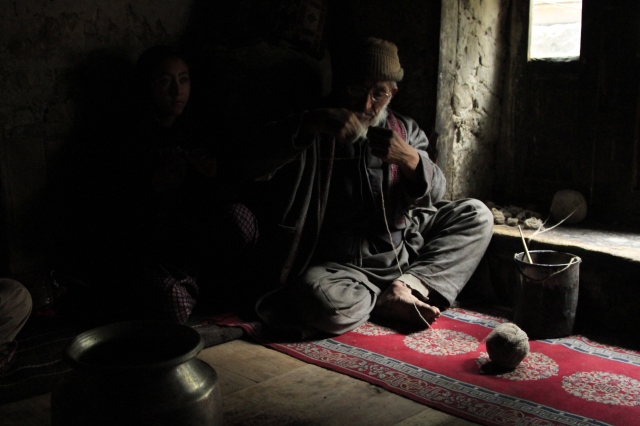
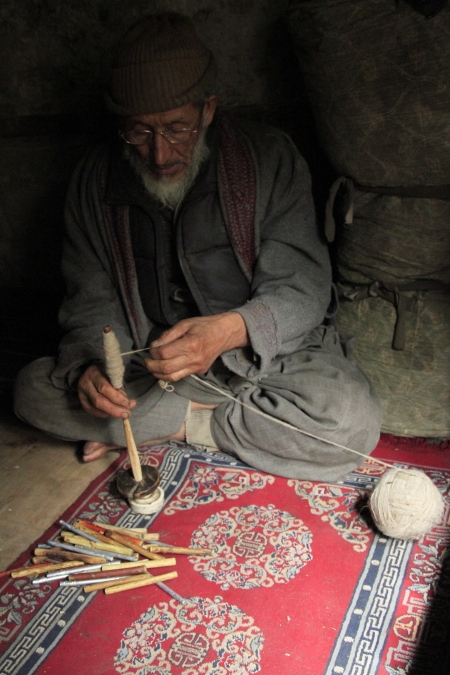
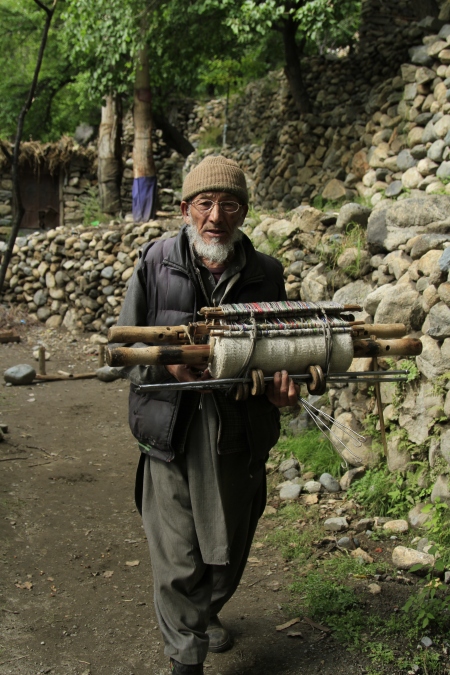
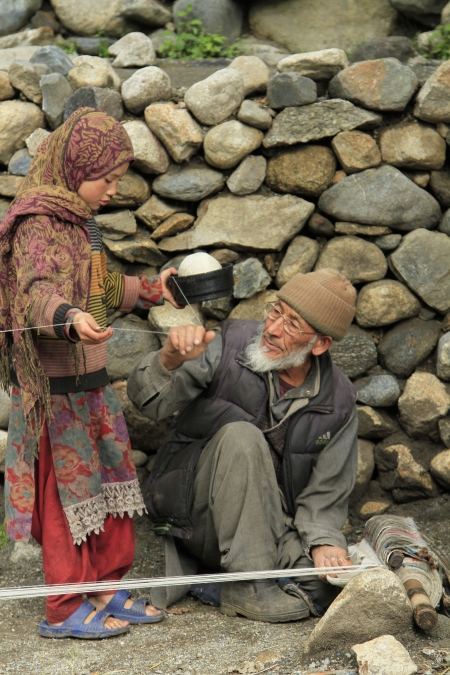
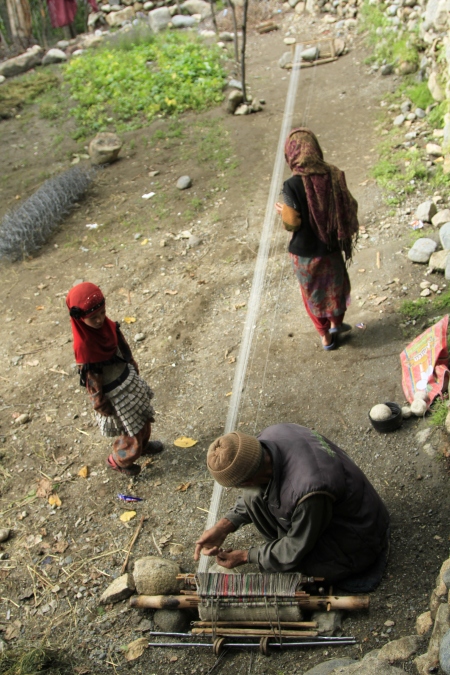
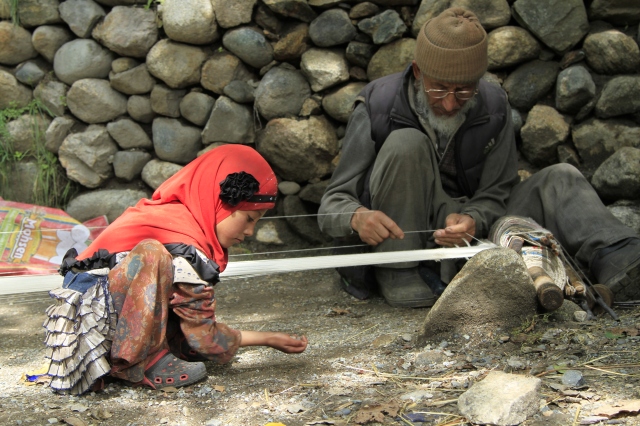
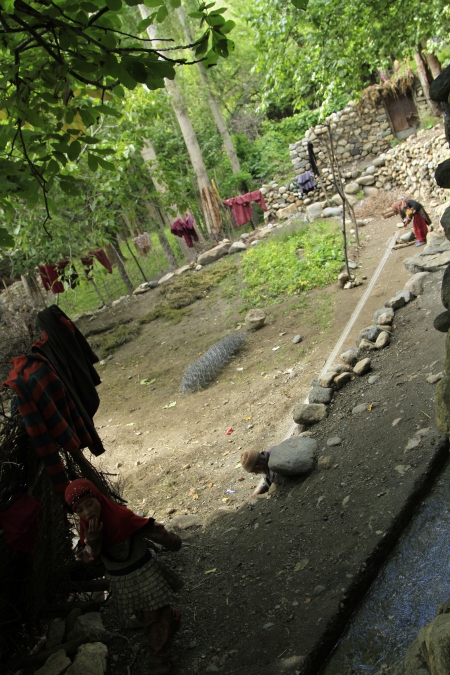
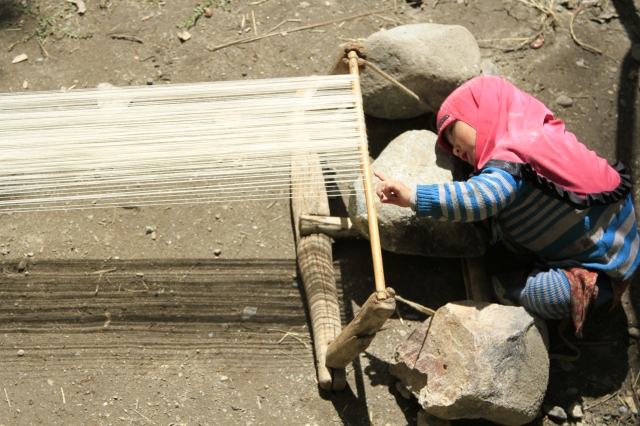
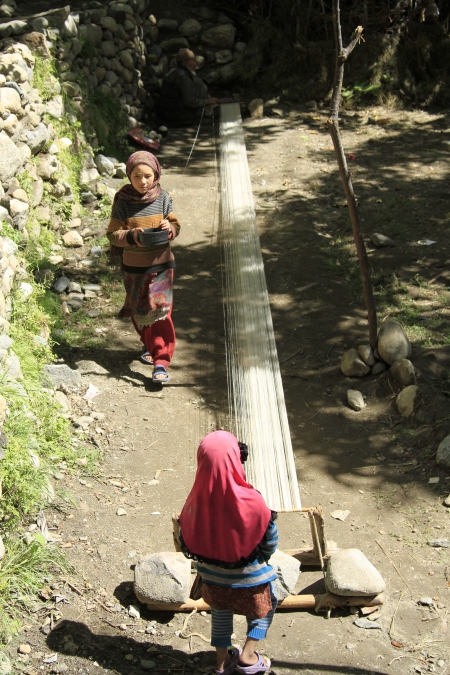
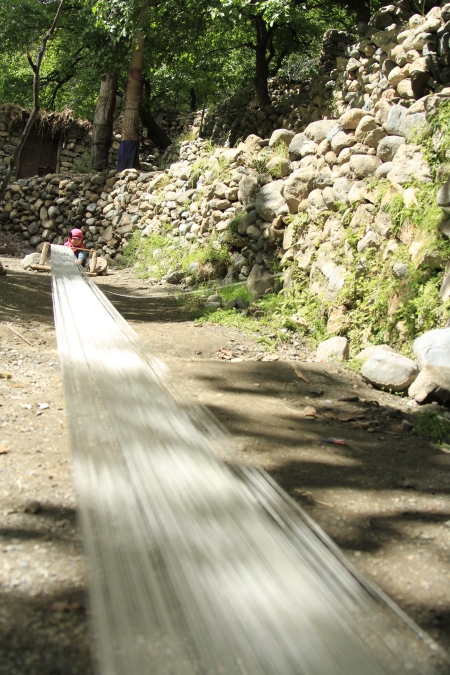
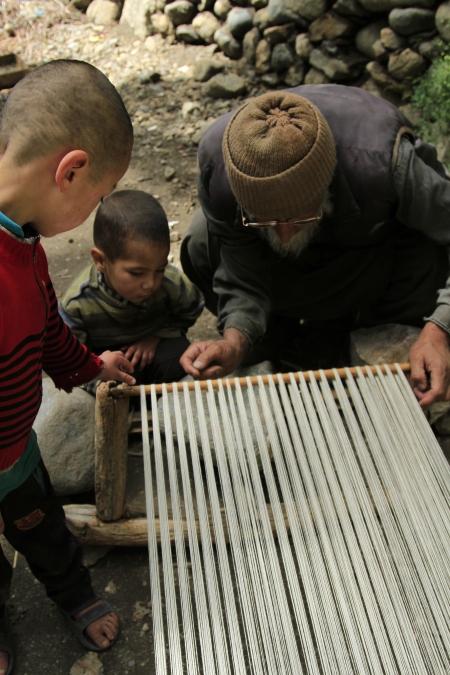
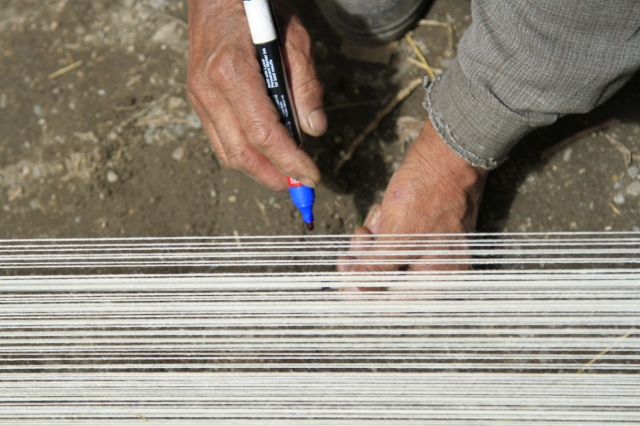
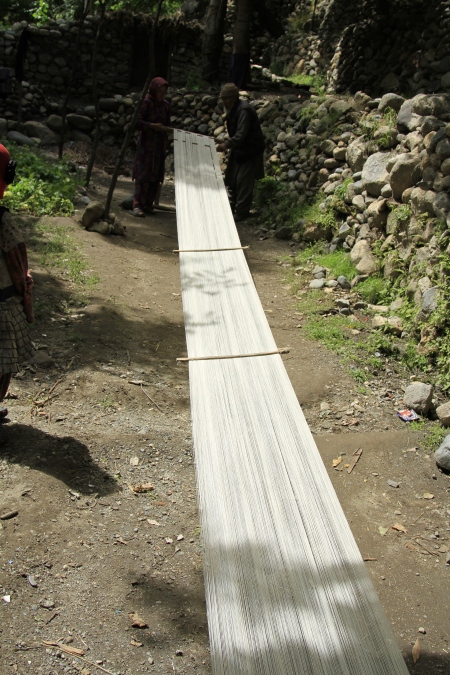
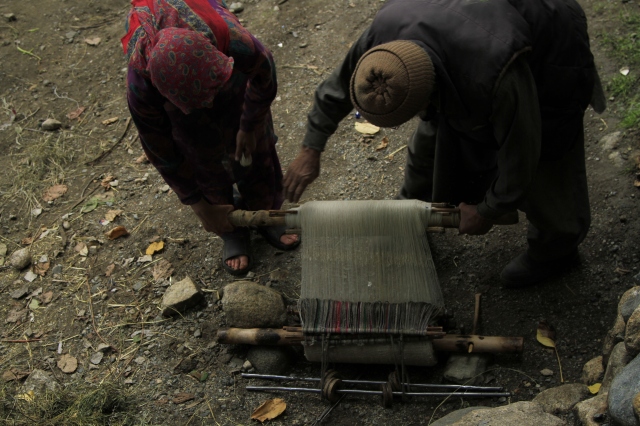
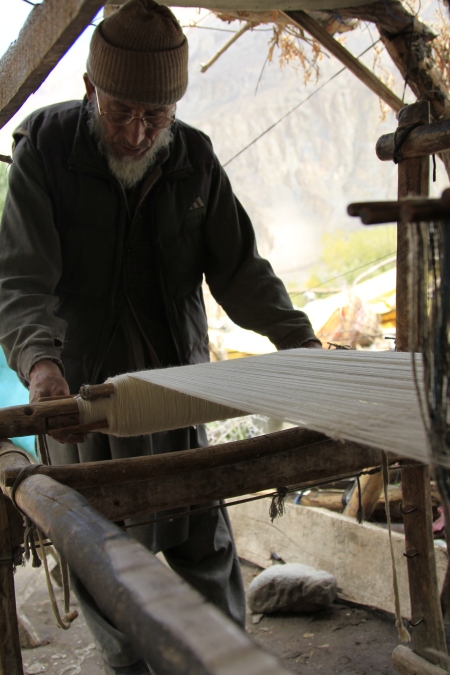
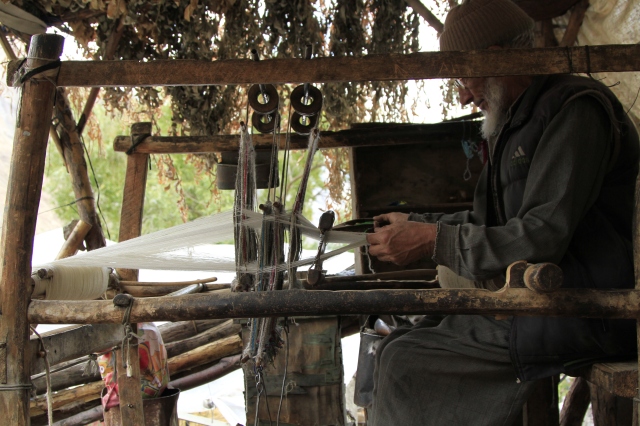
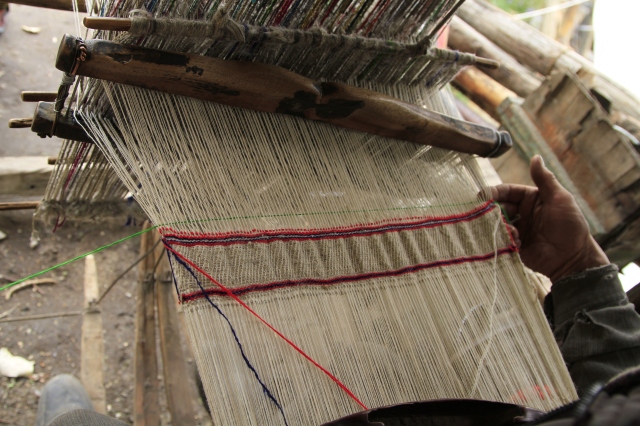
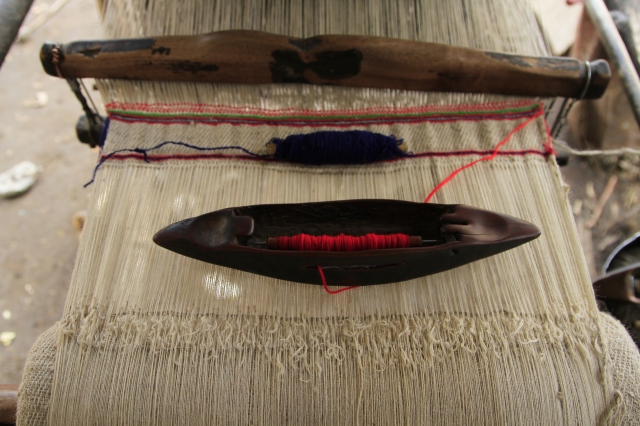
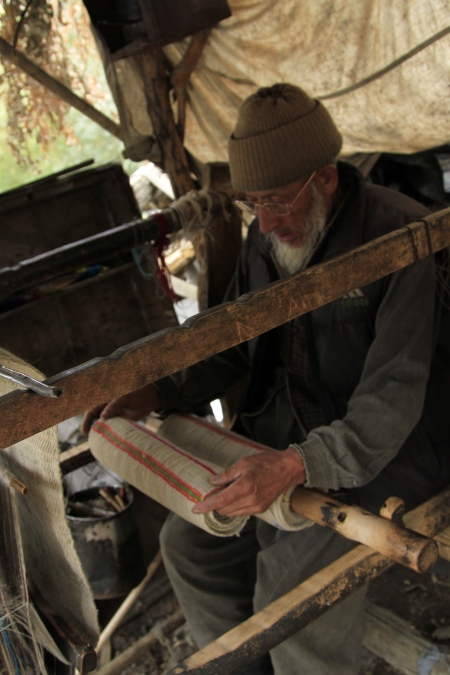
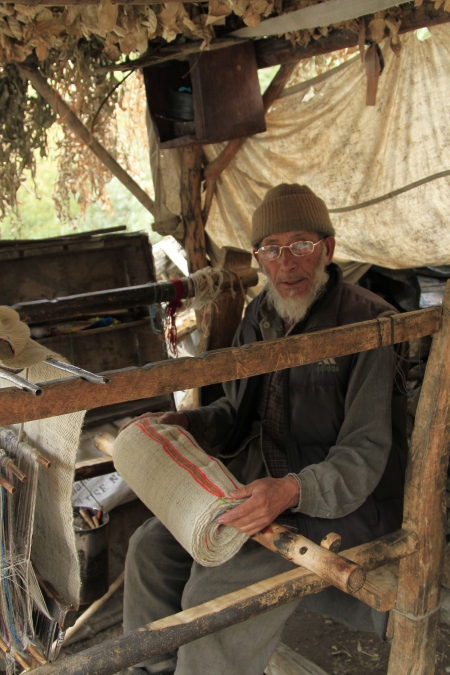
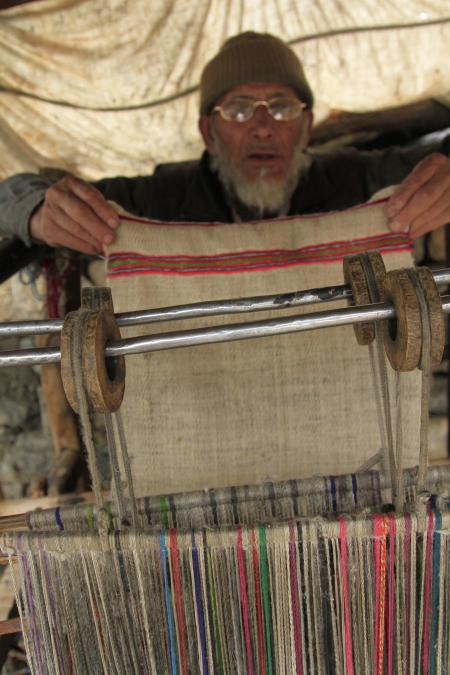
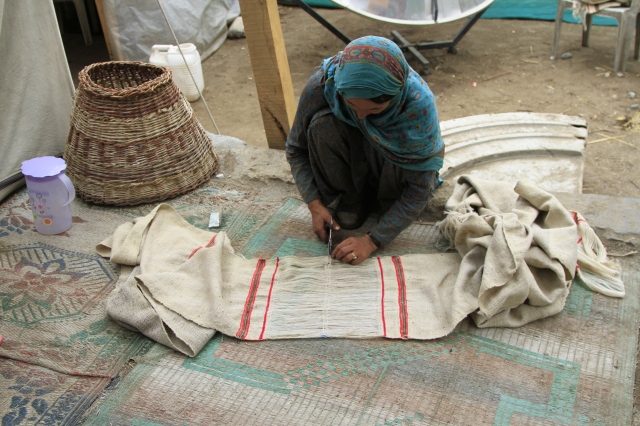
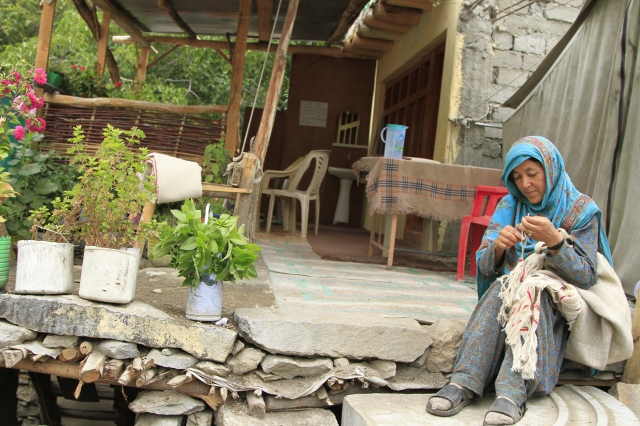
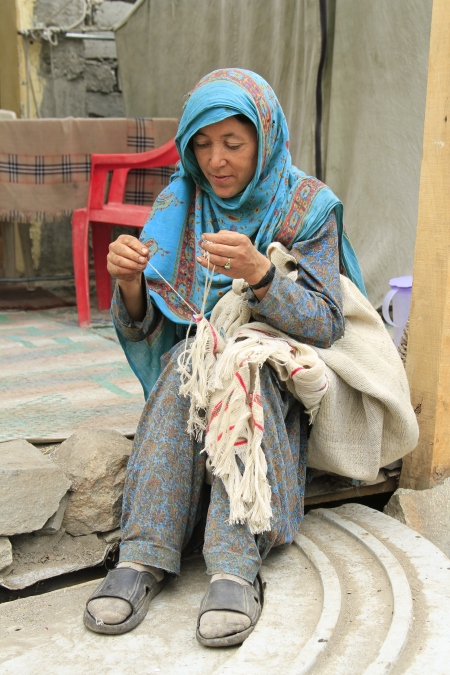
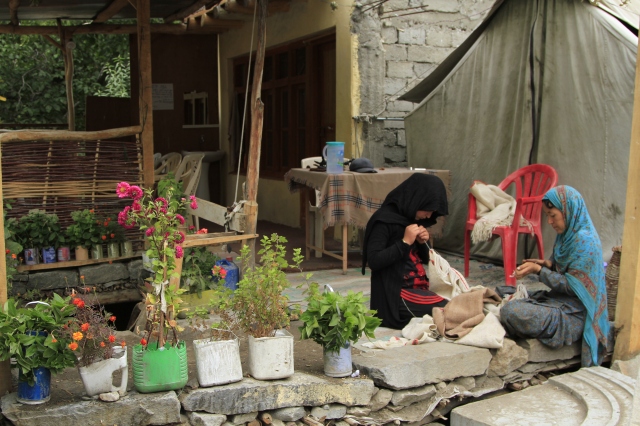
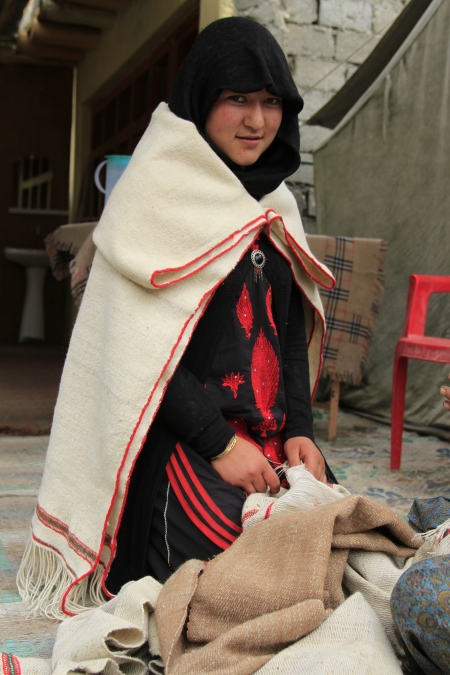
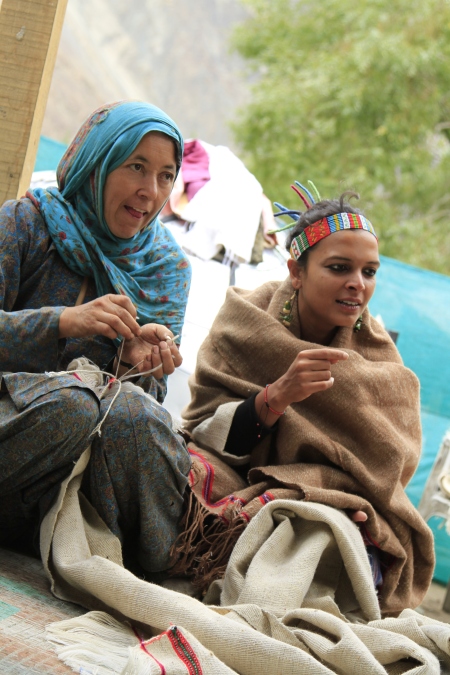
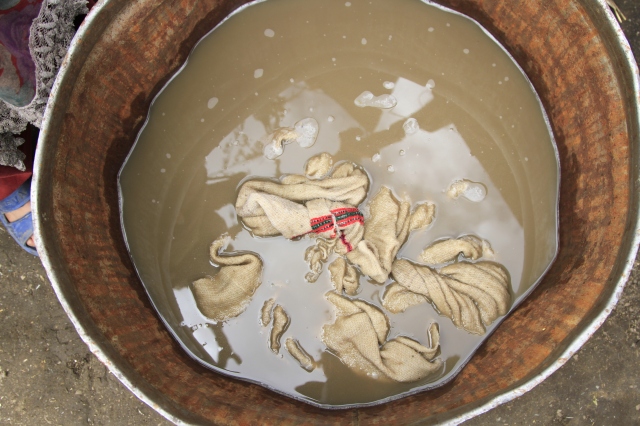
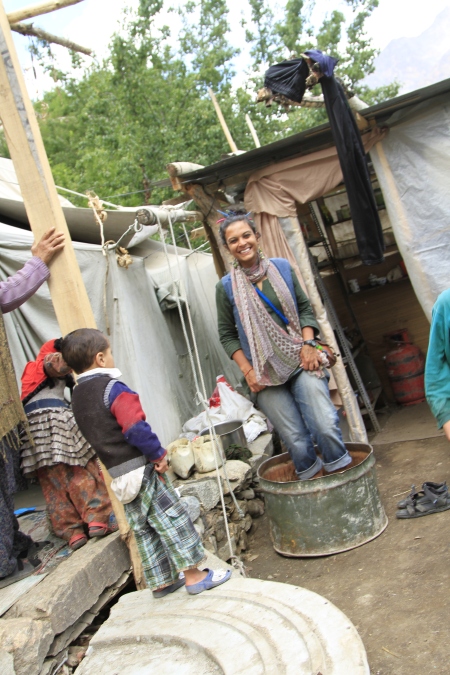
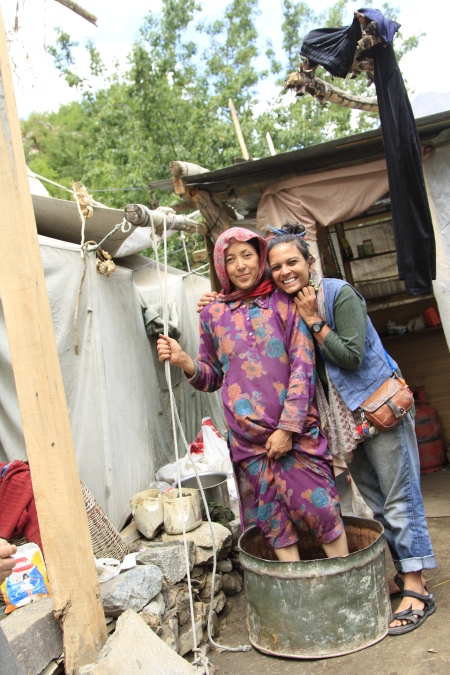
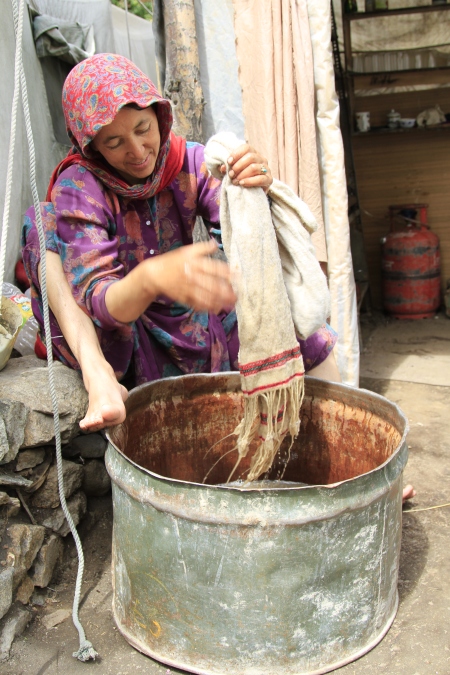
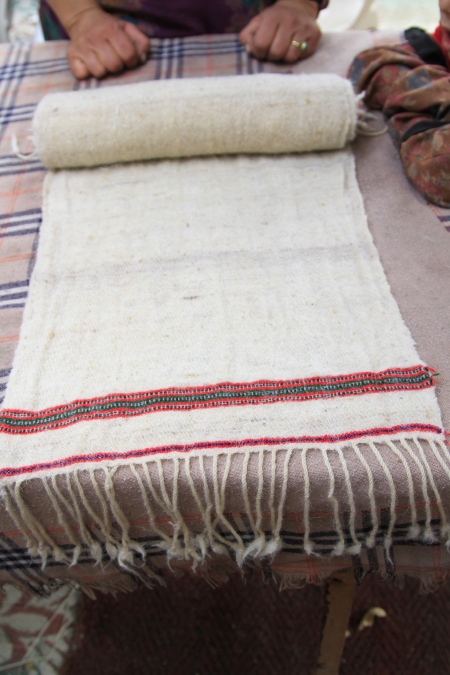
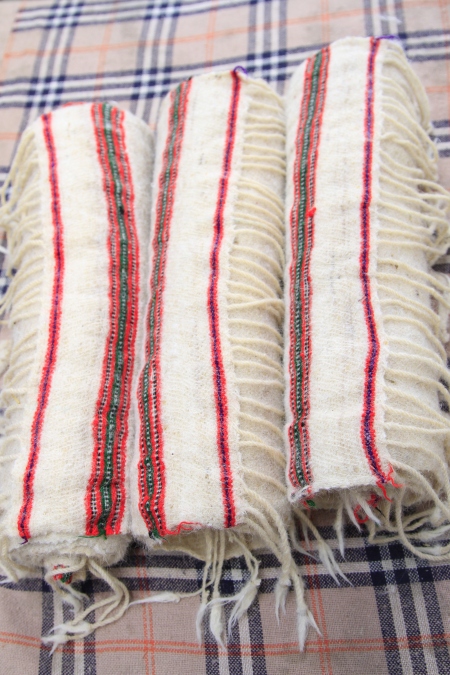
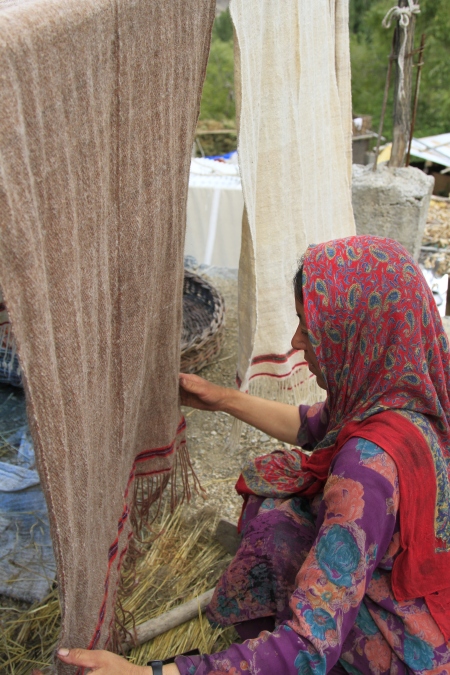
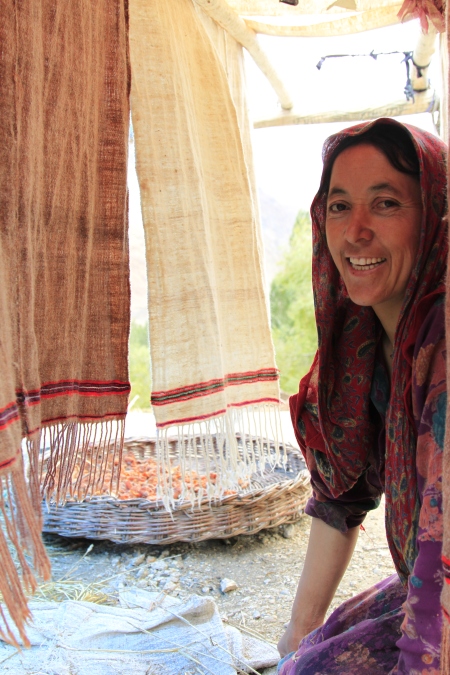
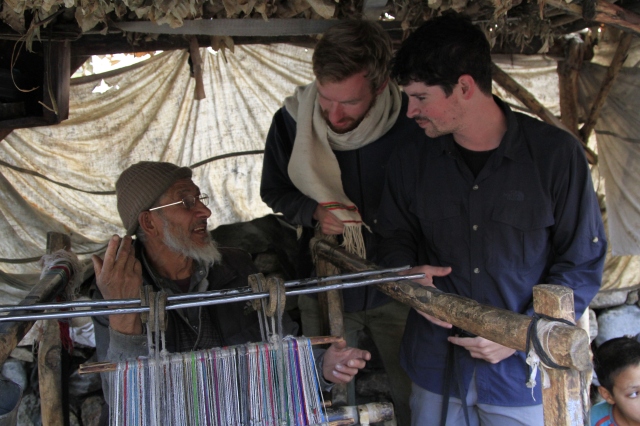
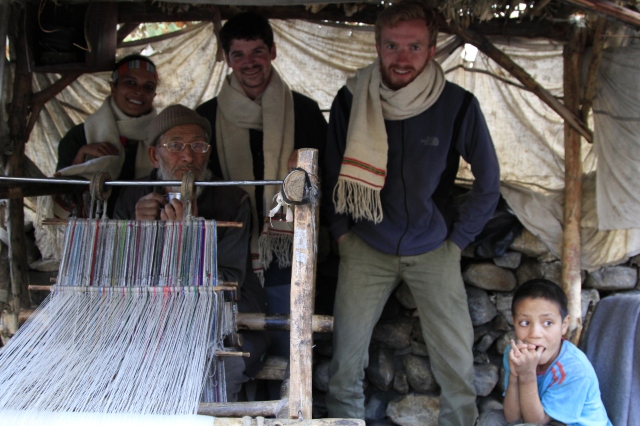
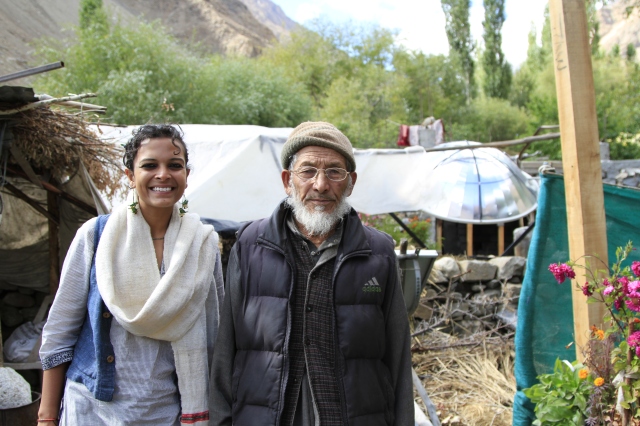
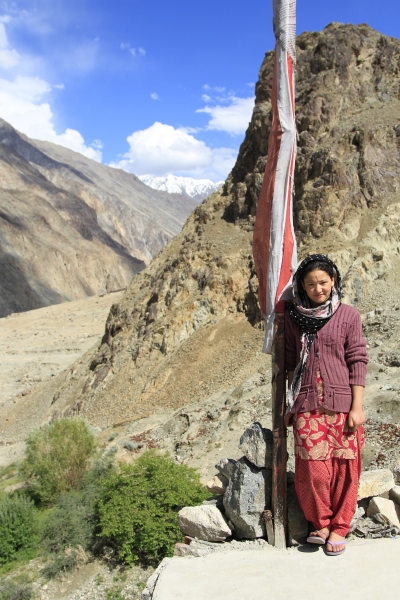
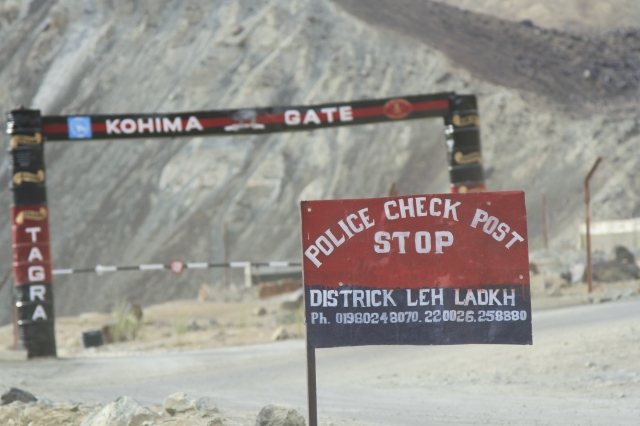
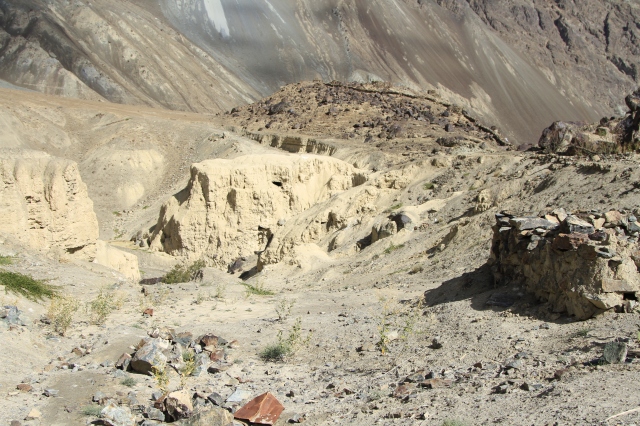
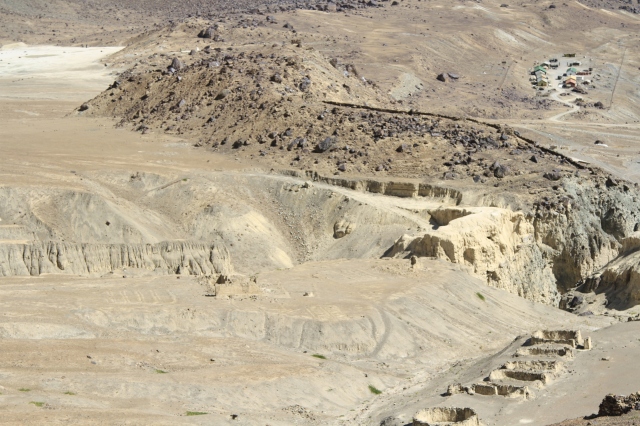
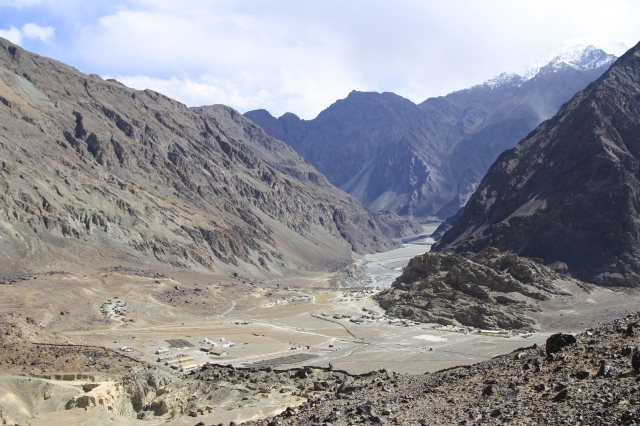
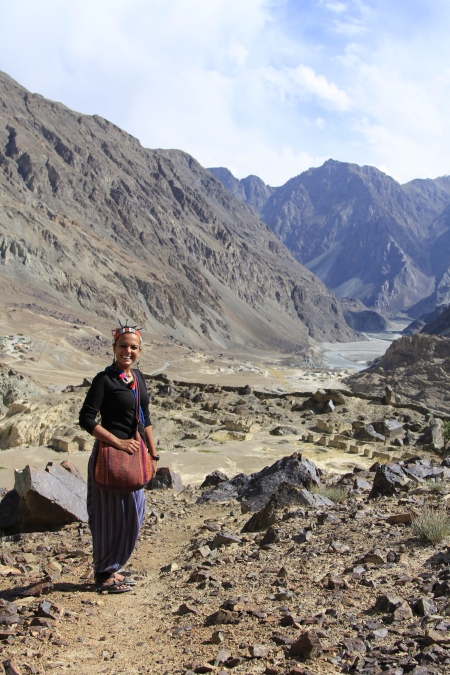
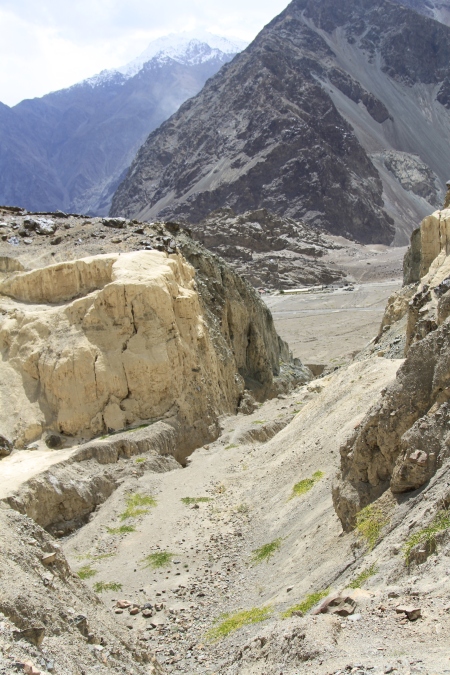
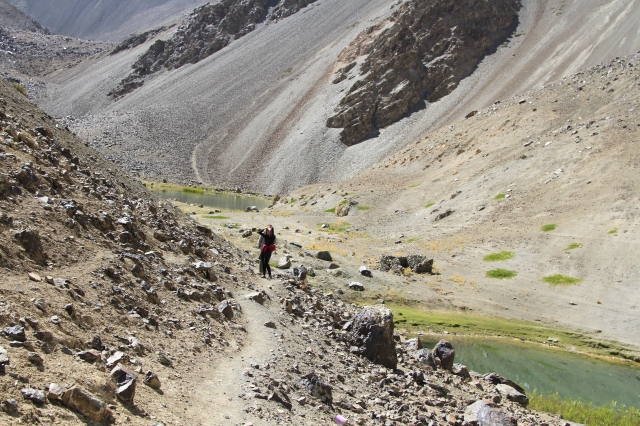
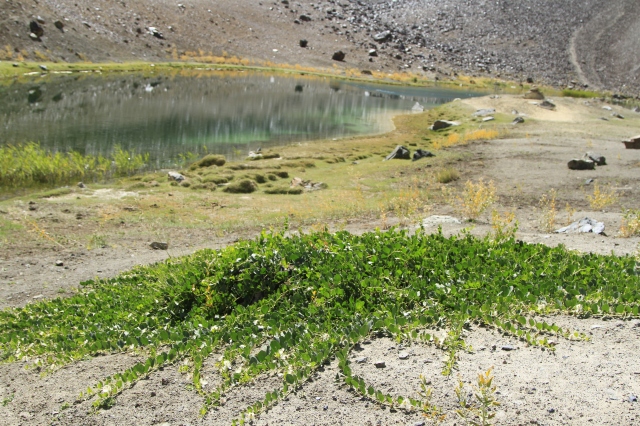
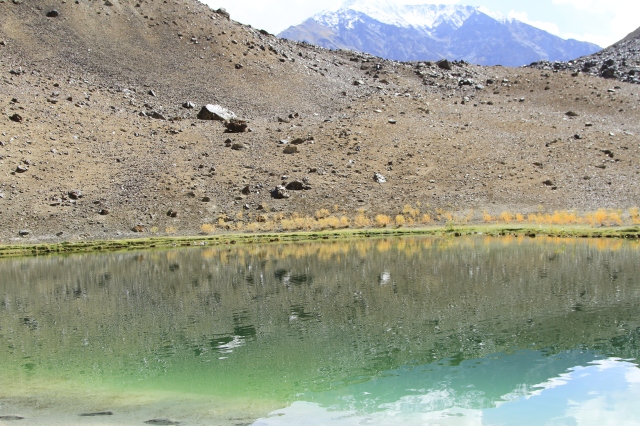
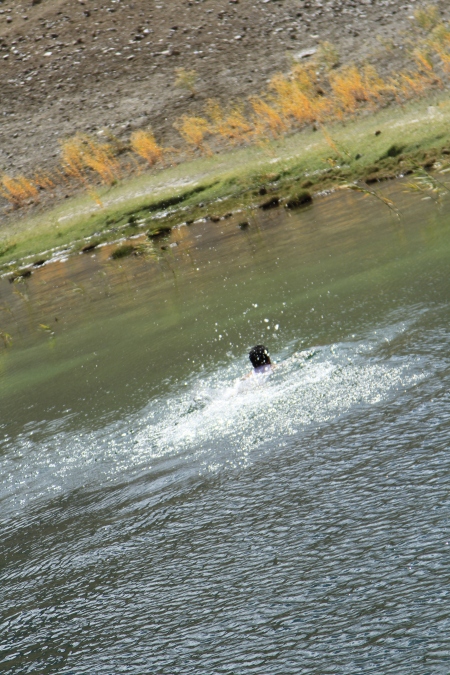
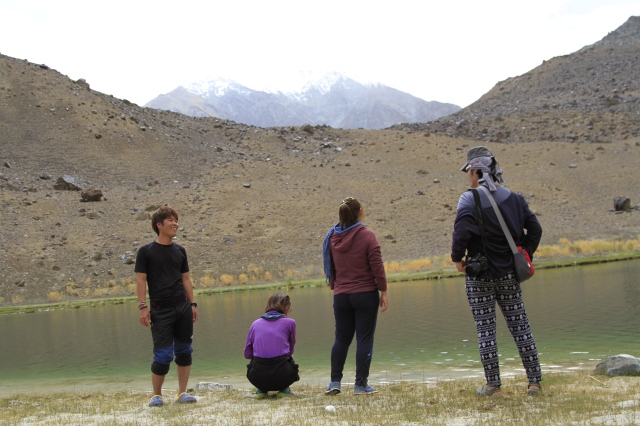
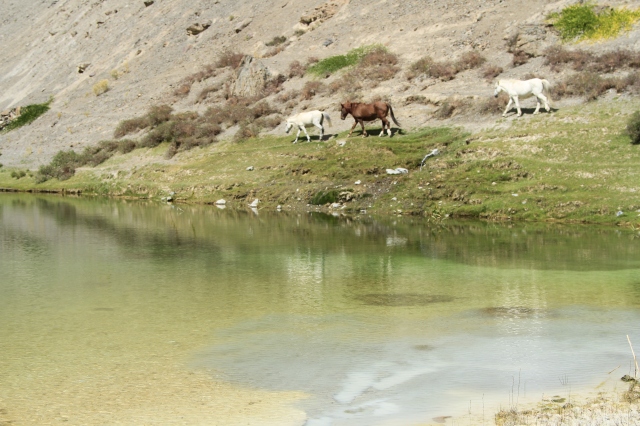
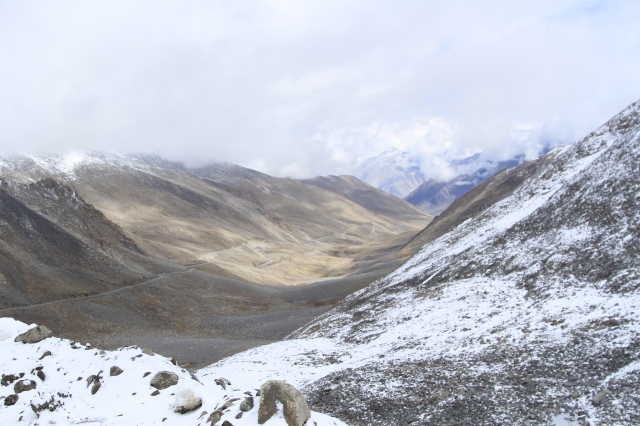
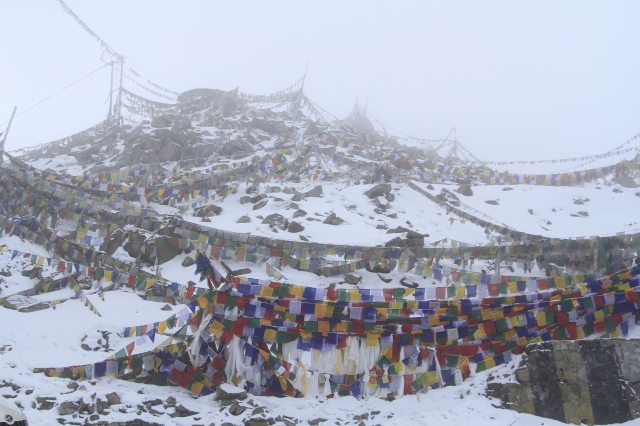
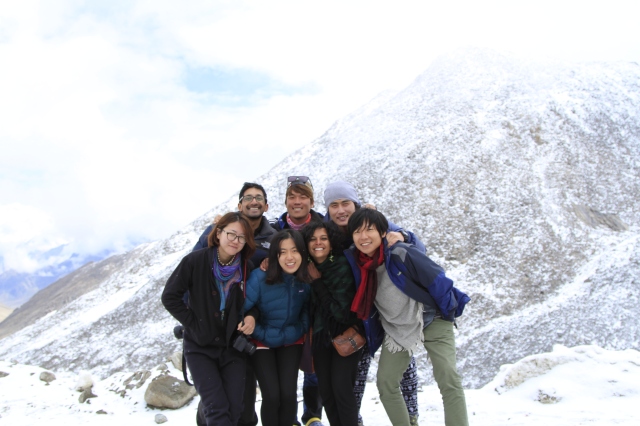

wow! all your adventure and information are gold to me now. I am trying to gather time and read at every word whenever I can. Thanks for all the efforts for posting
Love your blog, very very inspired!.
really very interesting story i want to read it again and again …. as i am eyewitness to those days….actually i belongs to turtuk .and that time i was also waiting for roads to open because m holidays going to finished.. and yaaa i saw you guyz many time in turtuk..particularly one among you love to play with children… 🙂 :p hmmm am i rite? …. anyway i would like to share this on facebook hope you dnt mind… you can see at facebook by searching #turtuk its a page
graduates. our grandparents also talked exactly that story about turtuk
I couldn’t read all the way through. But it’s really a great article!